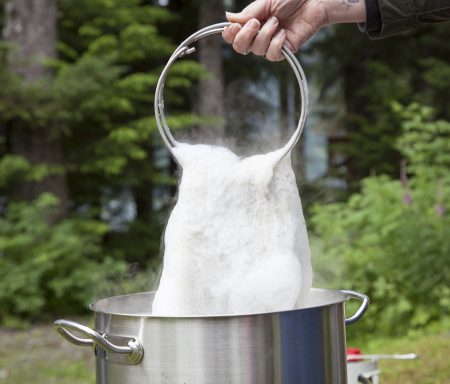This week: Are Botanical Colors yarn rings causing reactions in dye baths and can you mordant with cold water?
Each week, we are emailed with questions from our natural dye community asking simple and complex questions that we thought might be worth sharing. Here are a handful from this week answered by natural dyer in chief, Kathy Hattori, Founder of Botanical Colors:
I like the 7″ dyer’s rings, but have heard that aluminum is reactive to dyes and can have an effect on the dyed wool. Is this a problem ?
Aluminum can be reactive in some dye baths, causing a little bit of color lightening, but the rings are so small that I haven’t noticed any issue with natural dye baths, even in indigo vats, and I know of dyers that use many rings in a bath with no ill effects. Sometimes they do get a bit of sediment on them and I scrub it off.
For mordanting, is hot tap water enough or will I need to heat it up? I thought I read hot tap but your main doc calls for 180F degrees. I don’t think the tap water will get quite that hot. My plan for this processing is that I can mordant, dry and store for dyeing. Needing to put it on the heat will make it more problematic.
Mordanting with alum can happen hot or cold. The traditional method uses very hot water on a stove top or heat source, but if you are planning to mordant large amounts of fibers, this quickly becomes a production bottleneck. Another way to accomplish the mordant process is to mordant “cold” in room temperature water and let the fibers soak for at least 8 hours, and up to 3 days in the alum mordant bath. I use this technique a lot with large pieces of fabric. Simply prepare your mordant bath and instead of heating up the mordant, make sure it is completely dissolved, add to the larger tub of water, and then submerge fibers. Rotate the fibers every few minutes for the first 30 minutes, then completely submerge and cover the mordant pot or tub. Continue rotating every few hours and leave in the mordant bath for up to 3 days. You can also reuse the bath, adding in more mordant as we’ve outlined in our mordanting instructions.

